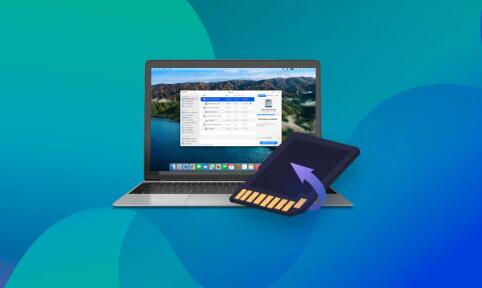1. Analysis
Overview of SD Card Data Loss: Discuss the common scenarios where SD cards can lose data (e.g., accidental deletion, formatting, corruption, physical damage).
Importance of Reliable Data Recovery Software: Explain why having reliable recovery software is essential for Mac users, especially photographers, videographers, and regular users.
2. Understanding How SD Cards Work
SD Card Structure: Briefly explain how SD cards store data and the role of the file system.
Common Causes of Data Loss: List and describe the most common causes of data loss on SD cards, including user errors and technical failures.

3. Features to Look for in SD Card Data Recovery Software
Compatibility with macOS: Discuss the importance of ensuring the software is fully compatible with the latest versions of macOS.
Ease of Use: Highlight the need for user-friendly interfaces, especially for non-technical users.
Support for Various File Formats: Emphasize the need for software that supports a wide range of file types (photos, videos, documents, etc.).
Recovery from Different Scenarios: Explain the value of software that can handle different recovery scenarios, such as formatted cards, corrupted cards, or accidentally deleted files.
Preview Functionality: Discuss the importance of being able to preview files before recovery.
Safety and Non-Destructive Recovery: Explain why it’s crucial for the software to ensure the original data remains intact during the recovery process.
4. Top SD Card Data Recovery Software for Mac
Disk Drill:
Overview: Provide a brief description of Disk Drill, its history, and its reputation in the market.
Key Features: Discuss features like deep scanning, previewing files before recovery, and compatibility with various file systems (HFS+, APFS, FAT32. exFAT, etc.).
Pros and Cons: List the strengths and potential weaknesses.
How to Use: Include a step-by-step guide on how to use Disk Drill for SD card recovery on Mac.
EaseUS Data Recovery Wizard:
Overview: Introduction to EaseUS, its user base, and reliability.
Key Features: Highlight features such as the ability to recover from formatted SD cards, lost partitions, and accidental deletions.
Pros and Cons: Discuss the advantages and limitations.
How to Use: Provide instructions on using EaseUS Data Recovery Wizard for Mac to recover SD card data.
PhotoRec:
Overview: Introduce PhotoRec as a free, open-source option with powerful recovery capabilities.
Key Features: Mention its wide support for file types and the command-line interface, which might be challenging for some users.
Pros and Cons: Balance the strengths with the potential difficulties for novice users.
How to Use: Guide readers through the process of using PhotoRec on a Mac.
Stellar Data Recovery:
Overview: Discuss Stellar’s longstanding presence in the data recovery industry.
Key Features: Highlight the software’s ability to recover data from various scenarios and its straightforward interface.
Pros and Cons: Outline the benefits and any possible drawbacks.
How to Use: Provide a step-by-step tutorial for using Stellar Data Recovery on Mac for SD cards.
5. Step-by-Step Guide to Recover Data from an SD Card on Mac
Preparation: What to do before starting the recovery process (e.g., stop using the SD card to prevent data overwriting).
Choosing the Right Software: How to decide which software to use based on the specific situation.
Running the Recovery: General steps to follow, including connecting the SD card, scanning for lost data, previewing recoverable files, and restoring them to a safe location.
Post-Recovery Tips: Best practices for saving recovered data and ensuring future data safety.
6. Common Mistakes to Avoid During SD Card Recovery
Continuing to Use the SD Card: Explain why this can reduce the chances of successful recovery.
Not Following Software Instructions Carefully: Stress the importance of following the recovery software’s steps precisely.
Choosing the Wrong Recovery Method: Discuss the risks of using incompatible software or incorrect recovery methods.
About us and this blog
Panda Assistant is built on the latest data recovery algorithms, ensuring that no file is too damaged, too lost, or too corrupted to be recovered.
Request a free quote
We believe that data recovery shouldn’t be a daunting task. That’s why we’ve designed Panda Assistant to be as easy to use as it is powerful. With a few clicks, you can initiate a scan, preview recoverable files, and restore your data all within a matter of minutes.
Subscribe to our newsletter!
More from our blog
See all postsRecent Posts
- Hard disk bad block repair 2025-04-11
- Truenas will scrub repair disk 2025-04-11
- Hard disk repair dubai 2025-04-11

 Try lt Free
Try lt Free Recovery success rate of up to
Recovery success rate of up to









